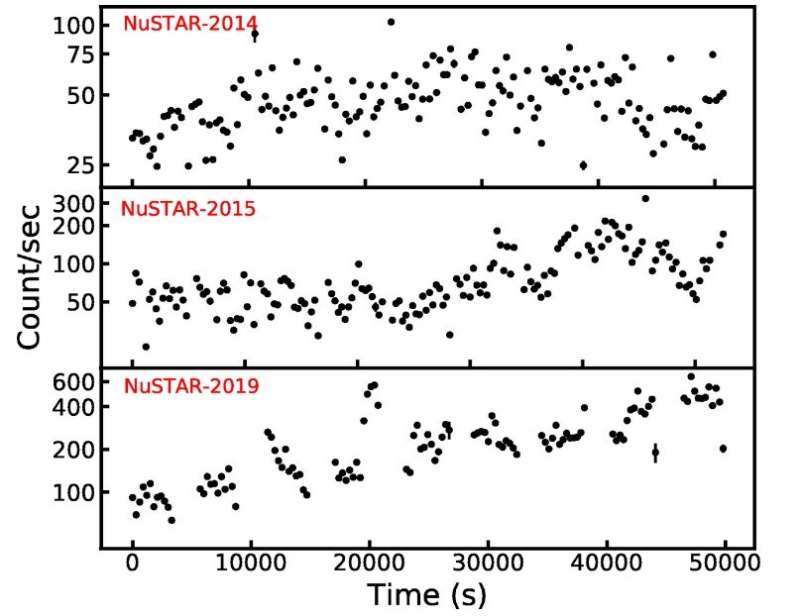January 4, 2023 report
This article has been reviewed according to Science X's editorial process and policies. Editors have highlighted the following attributes while ensuring the content's credibility:
fact-checked
preprint
trusted source
proofread
Study investigates the evolution of X-ray binary system GX 301-2

Astronomers from Argentina and France have investigated the evolutionary history of an eccentric high-mass X-ray binary known as GX 301-2. Results of the study, published December 22 on the arXiv pre-print repository, deliver important insights into the origin of this object and could help scientists to better understand the evolution of X-ray binaries in general.
X-ray binaries are composed of a normal star or a white dwarf transferring mass onto a compact neutron star or a black hole. Based on the mass of the companion star, astronomers divide them into low-mass X-ray binaries (LMXBs) and high-mass X-ray binaries (HMXBs).
Located some 10,000 light years away from the Earth, GX 301-2 is an XRB discovered in 1973, which consists of a compact object and an optical star designated Wray 977. Observations of Wray 977 have found that it is a hypergiant star with mass larger than 31 solar masses, making GX 301-2 an HMXB.
GX 301-2 showcases X-ray pulsations with a period of 11.6 minutes and experienced rapid spin-up episodes. It is one of the most eccentric systems among all the HMXBs known to date and its orbital period was measured to be about 41.5 days. In general, GX 301-2 turns out to be a unique object, whose individual properties are particularly different from every other known XRB.
A group of astronomers led by Adolfo Simaz Bunzel of the Argentine Institute of Radio Astronomy in Buenos Aires, Argentina, examined the peculiar properties of GX 301-2, focusing mainly on the origin and evolution history of this system. For this purpose they utilized the detailed stellar-evolution code MESA.
"We used the publicly available stellar-evolution code MESA to evolve binaries from their initial stages until the core-collapse scenario. We incorporated a natal kick distribution based on observations to continue the evolution during the X-ray binary phase and search for candidates matching current observations of GX 301-2," the researchers explained.
The study found that the GX 301-2 system requires the progenitor of the neutron star to have transferred most of its envelope to the companion (Wray 977), in a highly accretion-efficient scenario. The astronomers estimate that the progenitor had a mass within the range of 23–30 solar masses and that the initial mass ratio of the system was 0.8–0.9. They added that higher initial masses would most likely produce a black hole.
The finding regarding the mass of progenitor stars suggests that the initial orbital period was below five days. Above this limit, the accretion is not sufficient enough to increase the mass of the companion to be inside the range derived for Wray 977. Moreover, the initial orbital period of less than two days is also disfavored as the star would then fail to reach the core-collapse stage.
The researchers also investigated the strength of the so-called natal kick of the neutron star in GX 301-2. It is assumed that neutron stars receive a significant velocity kick at birth—reaching even 1,500 km/s. According to the study, the natal kick strength for the investigated system is likely to have been about 450 km/s.
Summing up the results, the authors of the paper underlined how unique the properties of GX 301-2 are, which was confirmed by their research.
"Weighting our results with commonly used distributions of initial binary parameters, we estimate that the chances of having HMXBs with properties similar to the ones found in GX 301–2 are very low, that is less than two out of 100,000 binaries. We thus do not expect to find another binary with similar properties in the Milky Way," the scientists concluded.
More information: Hexuan Deng et al, Improving Simultaneous Machine Translation with Monolingual Data, arXiv (2022). DOI: 10.48550/arxiv.2212.01188
Journal information: arXiv
© 2023 Science X Network




















